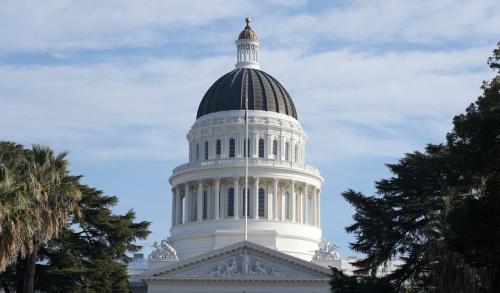Campaign 2000 appears on the verge of falling into a familiar trap. During the presidential primary process, entirely too much time and attention were devoted to charges that one candidate or another was going negative.
In the South Carolina primary, Sen. John McCain’s decision to run television ads critical of Gov. George W. Bush became the issue in the election, dominating press coverage and overwhelming discussion of differences on issues or approaches to governing. McCain’s subsequent pledge to forgo further negative campaigning deprived the nomination battle of any substantive weight.
Now much the same pattern seems to be developing in New York’s U.S. Senate contest and in the general election for the presidency. Hillary Rodham Clinton’s decision to attack the record and positions of her Republican opponent, Rep. Rick Lazio, prompted cries of “negative advertising” and much hand-wringing about the significance and appropriateness of going negative at this stage of the campaign. And Vice President Al Gore has launched a “Progress and Prosperity Tour” at least in part to counter press criticism that he was being entirely too negative in attacking his Republican opponent.
Given the public’s disdain for political bickering in Washington, it is natural for candidates to try to boost their standing by looking askance at the “tawdry” tactics of their opponents and appearing above the fray. But there is no good reason the rest of us should settle for a campaign dominated by arguments about campaign tactics.
A focus on the “negativity” of campaign advertising obscures more than it reveals. It often mistakenly conflates ads that are contentious and argumentative—challenging the record, character and platform of opponents—with those that are nasty, inaccurate or unfair. Election scholars have found it more productive to classify ads as advocacy (promoting a candidate’s qualifications), attack (pointing to the failings of one’s opponent) or contrast (comparing the positions, records or qualities of the opposing candidates).
From the perspective of the public, no one of these types is inherently better than another. Advocacy ads can be misleading and utterly bereft of useful content. Attack ads often provide more useful issue information and are less deceptive than those that advocate. And contrast ads range widely from the informative and legitimate to the banal and illegitimate.
Nor is there any strong evidence that one genre of campaign advertising is clearly more effective than another. The widespread belief that going negative invariably works is refuted by the record. Candidates make good and bad use of advocacy, attack and comparative ads, depending on the particular context of their campaigns and the skill and credibility of their efforts.
As the Task Force on Campaign Reform recently concluded, attack ads may be quite legitimate if they draw attention to genuine, politically relevant weaknesses in an opposing candidate’s performance or platform. On the other hand, distortions, exaggerations and outright lies are never legitimate campaign tactics, whether they focus on a candidate’s own supposed strengths or on an opponent’s supposed flaws.
Simplistically equating conflict and contention with “negativity” and “dirty politics” is itself likely to increase further public cynicism.
We should not allow candidate charges and countercharges of who is “going negative” to deflect attention from what really matters to citizens. At this stage of the campaign, few voters have tuned in to the choices facing them in November. But there is no denying the reality that this is one of the most open and high-stakes elections in decades. Control of the White House and Congress are up for grabs.
Despite the soothing, centrist rhetoric from the presidential candidates, they and their parties’ congressional candidates are offering the country stark differences—in public philosophies, approaches to governing, federal court appointments, the uses of the budget surpluses, the future of Social Security, campaign finance, the conditions for humanitarian intervention, the advisability of a national missile defense.
There is much of consequence to discuss in this campaign. Substantial differences on important matters of public policy and the conduct of governing exist between the presidential candidates and their parties, in New York and across the country. George W. Bush and Al Gore—and Hillary Clinton and Rick Lazio—have much to argue about over the next four months. It would be a tragedy if those differences went unexplored because of our squeamishness and fascination with candidates going negative. Let them have at it.
The Brookings Institution is committed to quality, independence, and impact.
We are supported by a diverse array of funders. In line with our values and policies, each Brookings publication represents the sole views of its author(s).



Commentary
Op-ed‘Going Negative’ Can Be Good for Politics
June 29, 2000